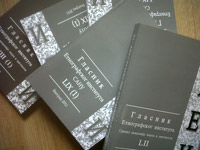Јувенилни бракови, дечје невесте и смртност деце код српских Рома
DOI: 10.2298/GEI110512001C UDK: 316.811.1(=214.58)(497.11); 39(=214.58)(497.11); 314.12(=214.58)(497.11) ID: 187970572
Сажетак
Према извештају УНДП-а (UNDP) из 2006, Роми који живе на територији Европе изложени су различитим врстама дискриминације, друштвено и географски су изоловани, животни век им је у просеку нижи за 10–15 година у поређењу са осталим популацијама, и још увек имају високу стопу смртности деце. Стопа незапослености достиже и до 80%. Једном речју, Роми у Европи живе у изразитој сегрегацији, што се може рећи и за Роме у Србији. Како интегрисати Роме у модерно европско друштво представља горући проблем. И поред напора различитих институција, влада, организација и активиста да се положај Рома поправи, скоро сви напори остају на бази покушаја и реторике, јер се главним препрекама успешне интеграције нико и не бави- а то су друштвени антагонизам између Рома и не-Рома и одређени елементи саме ромске културе који подстичу и одржавају сегрегацију и етноцентризам.
Кључне речи: јувенилни брак, морталитет деце, Роми, Србија
Reference
populations.” Current Anthropology 23, 1, 13–24.
Bereczkei, Tamas. 1993. “r-selected Reproductive Strategies Among Hungarian
Gypsies.” Ethology and Sociobiology 14, 71–88.
Cahn, Claude. 2007. The Unseen Powers: Perception, Stigma and Roma Rights,
ROMA RIGHTS, available at http://www.errc.org/cikk.php?cikk=2870
Crowe, David M. 1996. A history of the Gypsies of Eastern Europe and Russia.NewYork:
St. Martin’s Griffin.
Čvorović, Jelena. 2010. Roast Chicken and other Gypsy stories. Hamburg: Peter
Lang GmbH Internationaler Verlag der Wissenschaften, European
University Studies, Series 19 B.
Čvorović, Jelena. Rushton,.Philippe J. and Tenjevic, Lazar. 2008. “Maternal IQ and
Child Mortality in 222 Serbian Roma (Gypsy) Women.” Personality and
Individual Differences 44, 1604–1609.
Čvorović, Jelena. 2006. “The Making of Gypsies: Invention of Tradition.” EAP 1,
47–59.
Čvorović, Jelena. 2004. “Sexual and Reproductive Strategies among Serbian Gypsies.”
Population & Environment 25, 217–242.
Đorđević, Tihomir, R. 1924. Iz Srbije Kneza Miloša. Stanovništvo–naselja.
Beograd: Geca Kon.
Fraser, Angus. 1992. The Gypsies. Cambridge: Blackwell.
Geronimus, Arline T. 1996. “What teen mothers know.” Human Nature 7, 323–52.
Makinson, Cowell. 1985.”The health consequences of teenage fertility.” Fam Plann
Perspect 17, 132–39.
Maynart, Raymond A 1996.(ed.). Kids Having Kids. A Robin Hood Foundation
Special Report on the Costs of Adolescent Childbearing. New York, NY:
The Robin Hood Foundation.
Oxfam and Belgrade Institute for Health Protection. 2003. Roma health. Oxfam,
Great Britain and the Belgrade Office.
Reichman, Nancy E. and Pagnini. David L. 1997. „Maternal age and birth
outcomes: data from New Jersey.” Fam Plann Perspect 29, 268–72.
Rich-Edwards, Janet. 2002. “Teen pregnancy is not a public health crisis in the
United States. It is time we made it one.” Int. J. Epidemiol. 31, 3, 555–556.
Ringold, Dana. 2001. Education of the Roma in Central and Eastern Europe: Trends
and Challenges. In The Roma Education Resource Book 2, edited by Christina.
McDonald, Judit Kovacs and Csaba Fenyes, 17–42. Budapest: Open
Society Institute, Institute for Educational Policy.
Rothenberg, Paula and Varga, Petra E. 1981. “The relationship between age of
mother and child health development.” Am J Public Health 8, 810–17.
Save the Children 2001. Denied A Future? The Right To Education of Roma, Gypsy
and Travelers Children. United Kingdom: Save the Children Fund.
Savić, Svenka. 2001. Romkinje. Novi Sad: Futura Publikacije.
Scheper Huges, Nancy. 1989. Death Without Weeping. National History 14, 8–16.
Stanković, Vladimir. 1992. Romi u svetu podataka Jugoslovenske statistike. In
Razvitak Roma u Jugoslaviji: problemi i tendencije, 159–179. Beograd:SANU.
Sutherland, Ann. 1975/1992. Gypsies: The Hidden Americans. Chicago, Ill: Waveland
Press.
Timmerman, Jim. 2004. “When her feet touch the ground: conflict between the
Roma familistic custom of arranged juvenile marriage and enforcement of
international human rights treaties.” J. Transnational Law & Policy, 13,
2, 475–497.
UNICEF 2009. State of the World’s Children – 2009.
http://www.unicef.org/sowc09/docs/SOWC09_Table_9.pdf
U.N.D.P. 2006. At Risk: Roma and the displaced in Southeast Europe.
Uzunova, Iskra. 2010. “Roma Integration in Europe.” Arizona Journal of International
& Comparative Law 27, 1, 283–323.
Vukanović, Tatomir. 1983. Romi (Cigani) u Jugoslaviji. Vranje: Nova Jugoslavija.
Wasser, Samuel K. and Place, N. J. 2001. Reproductive filtering and the social environment.
In Reproductive Ecology and Human Evolution, edited by Ellison
Peter. T, 137–158. New York: Aldine de Gruyter.
<https://www.ei.sanu.ac.rs/index.php/gei/article/view/430>.
Датум приступа: 17 nov. 2025






